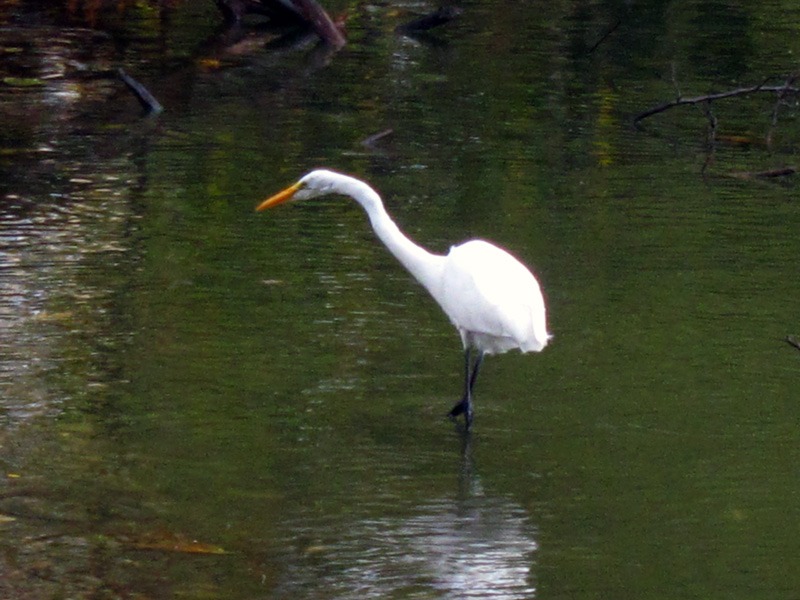 I went for a walk in the rain this morning, heading to the North Pond, hoping to see the grey heron again. I was curious to learn if what I’d been told was true: that it wasn’t a grey heron but a juvenile great blue.
I went for a walk in the rain this morning, heading to the North Pond, hoping to see the grey heron again. I was curious to learn if what I’d been told was true: that it wasn’t a grey heron but a juvenile great blue.
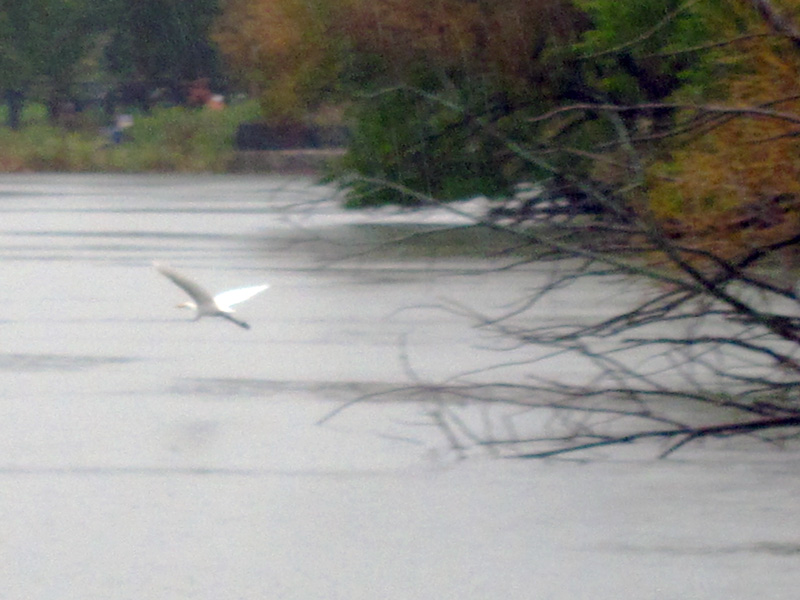 A wading bird suddenly rose in flight. I snapped it, startled at seeing a wing so white. Instead of the grey heron, here was a beautiful white bird.
A wading bird suddenly rose in flight. I snapped it, startled at seeing a wing so white. Instead of the grey heron, here was a beautiful white bird.
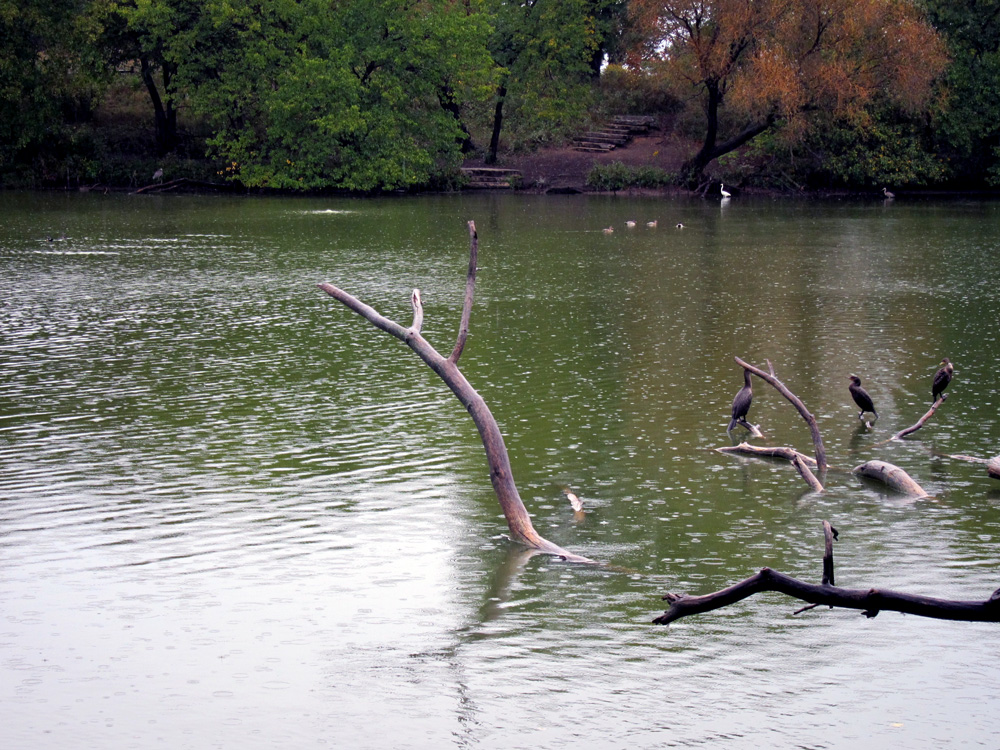 The white bird was visible from a great distance away. Rounding the bottom of the pond, I came to the snag where the cormorants hang. From there, I could see the white bird, flanked by the great blue heron and the ‘grey heron’, on the opposite side. (Click image to enlarge.)
The white bird was visible from a great distance away. Rounding the bottom of the pond, I came to the snag where the cormorants hang. From there, I could see the white bird, flanked by the great blue heron and the ‘grey heron’, on the opposite side. (Click image to enlarge.)
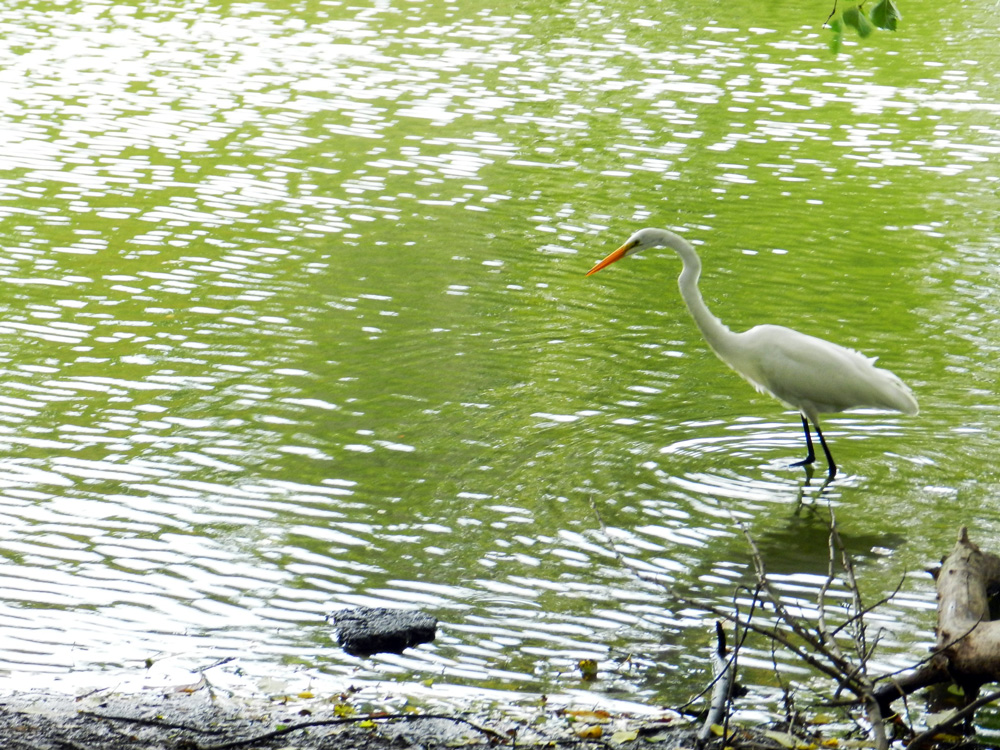 I returned in the afternoon to get another look at the bird, a great egret, which is easy to identify because of its black legs, yellow bill, and pure white plumage. It was great fun to see the bird wading along, so elegant-looking.
I returned in the afternoon to get another look at the bird, a great egret, which is easy to identify because of its black legs, yellow bill, and pure white plumage. It was great fun to see the bird wading along, so elegant-looking.
 Smaller than the great blue heron, the great egret has an impressive wingspan. Its flight is very efficient, too: it flaps its wings just twice a minute while cruising at 25 miles an hour.
Smaller than the great blue heron, the great egret has an impressive wingspan. Its flight is very efficient, too: it flaps its wings just twice a minute while cruising at 25 miles an hour.
The Audubon Society was founded to keep the great egret from extinction. The bird was slaughtered in great numbers in the 19th century, when its feathers (particularly in breeding season, when it grows special fluffy nuptial plumage) were ‘harvested’ to make hats for ladies. Thanks to preservationists, this glorious bird is still with us today.
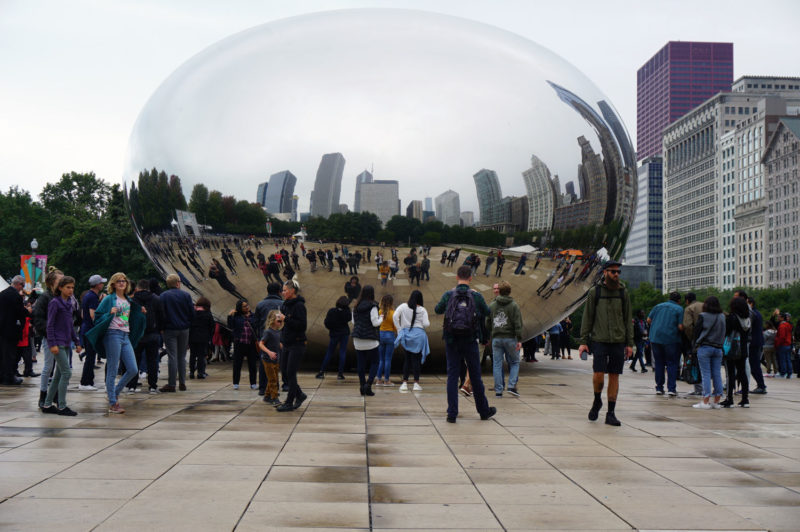
harley says
Wonderful pictures; I so enjoyed looking at them! You are really getting good at taking photos of those birds at the north pond, plus your knowledge of them is growing and growing. . . . The third picture I found particularly enchanting. The three cormorants on three different branches is very cool, and the white bird in the distance, the four birds in the tree line towards the way back of the photo proves you have a keen eye! A great post!
Celia says
Thanks, Harley. The pond as a habitat has gotten better over time, too. It’s a better place to see birds than the South Pond is.